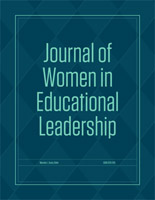Educational Administration, Department of

Journal of Women in Educational Leadership
Date of this Version
4-2007
Document Type
Article
Citation
Journal of Women in Educational Leadership, Vol. 5, No. 2-Apri12007 ISSN: 1541-6224
Abstract
The purposes of this study were to survey the views of female adolescents about: (a) their classroom teachers' language used during instruction, (b) their attitudes toward the language of classroom instruction, and (c) views about listening behaviors. A survey design was used with 31 participants ranging in age from 15 to 18 with a mean age of 17.12 years. Three questionnaires addressing classroom instruction and listening behaviors were read to each student. Two open-ended questions on learning in school were included in the study. Descriptive findings revealed the language load of the curriculum was too difficult and not sufficiently understood by one-third to more than one-half of the study participants.
As early as 1977, McPartland and McDill discussed the role of educators in reducing school violence. Researchers have pointed out that educators within school systems encounter high numbers of at-risk student populations who are exposed to risk factors that can lead to the development of maladaptive behavior leading to school failure, dropout, delinquency and other types of violence (Walker & Sprague, 1999). Understanding and addressing the effects that risk factors can have on school readiness, academic performance and students' success in school is an on-going challenge for educators. Teachers not only are involved in the day-to-day planning of school-based programs, but are often overwhelmed with the challenges of managing students' behavioral problems because a common setting for adolescent fighting is at school (Franke, Huynh-Hohnbaum, & Chung, 2002). In this study, violence refers to behaviors and actions that include the use of threats or intentional harm to individuals or property (Van Hasselt & Hersen, 1999).


Comments
Copyright © 2007 Pro>Active Publications. Used by permission.